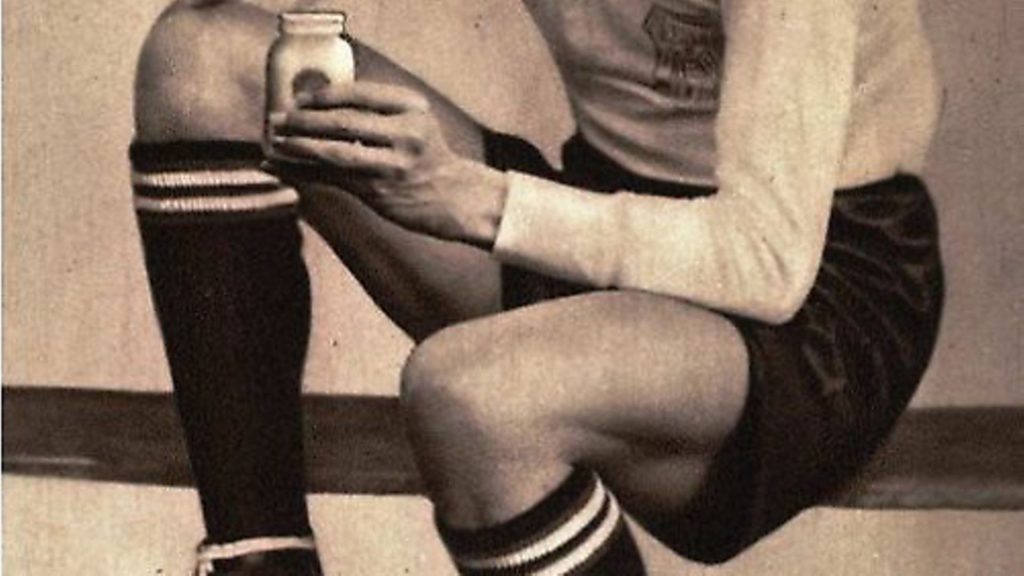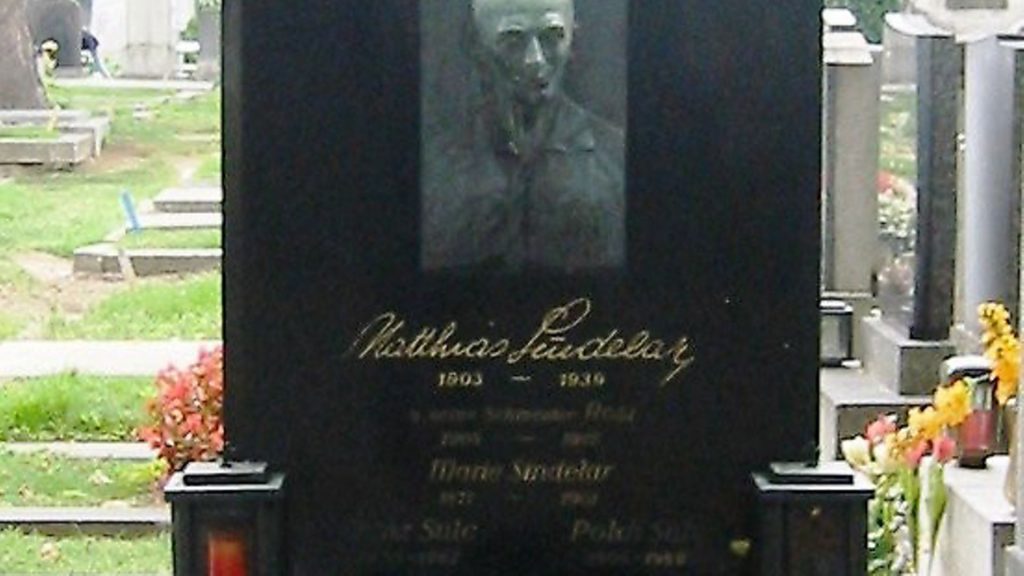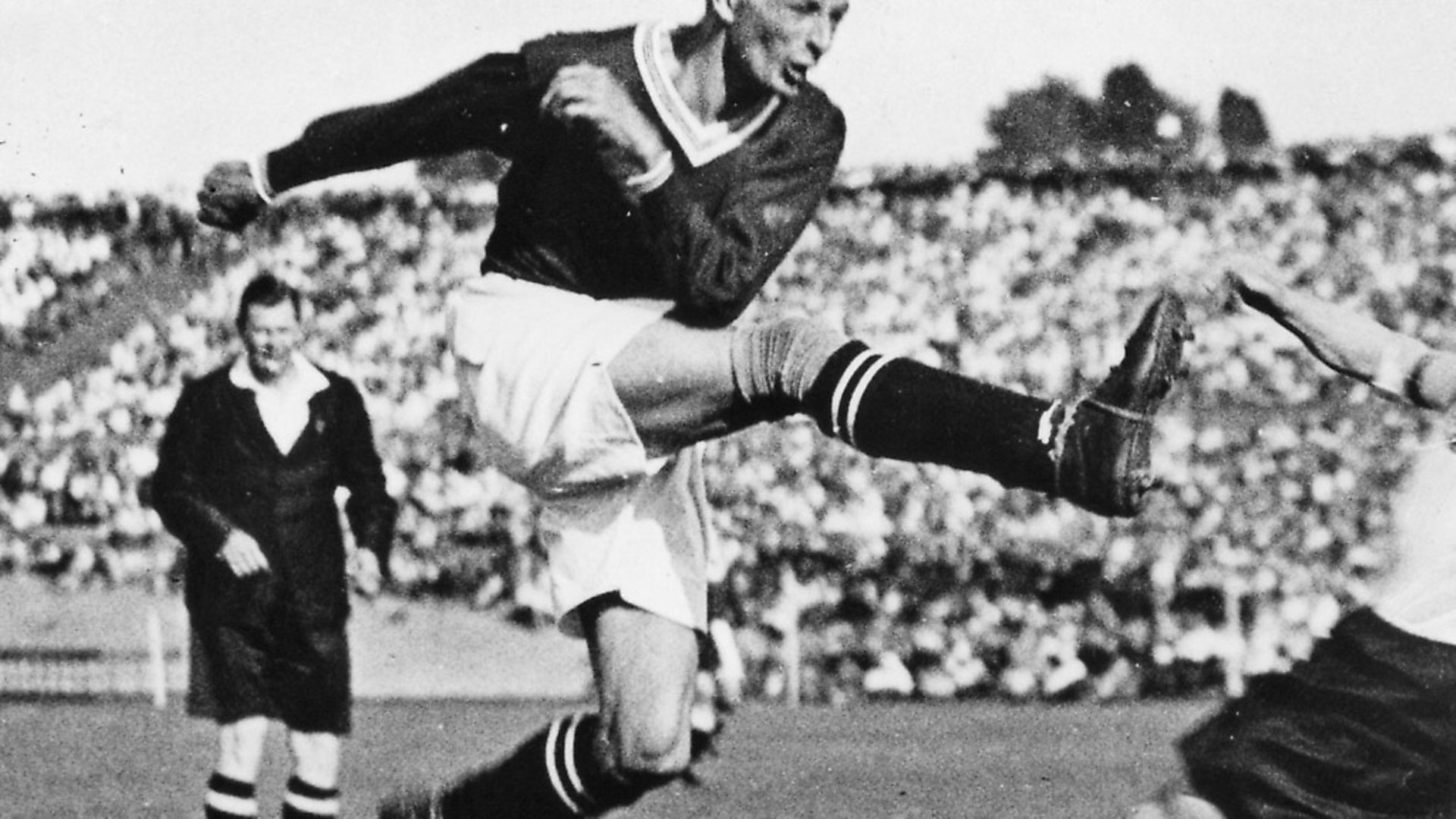This week marks the 80th anniversary of the mysterious death of the sublimely-talented footballer Matthias Sindelar. CHARLIE CONNELLY revisits the tragic story of a true Austrian hero

Vienna has always had a strong fascination with death. In the aftermath of the Habsburg empire, as citizens came to terms with the end of six centuries of imperial grandeur post-1918, the city’s suicide rate skyrocketed and has remained among the highest in Europe ever since. Freud identified a ‘death mania’ among the Viennese, while an old song popular in the wine taverns credits Death himself with being a native of the city. There is even a museum devoted to funerals.
Perhaps unsurprisingly Vienna boasts one of the world’s largest cemeteries, the Zentralfriedhof, where somewhere north of three million people take their eternal rest. It is a popular spot for family outings and picnics, and there’s even a Viennese euphemism for dying – ‘taking the 71’ – that references the bus that stops outside the main entrance.
It is a popular destination for tourists too. The ground is worn particularly smooth between the gates of the Zentralfriedhof and the tombs of Beethoven, Brahms and Schubert, for example, but for all the composers, writers, artists and musicians who lie in its clay there’s one grave a short walk after a right turn at the main gate that’s rarely visited yet represents possibly the most Viennese story of them all.
Always in shadow, so with a perpetual chill in the air, it is a black tomb with a slightly eerie bas-relief sculpture portrait of its occupant emerging from the marble headstone, the lime-streaked, faintly avian face of a man with receding hair swept back from his forehead who is wearing a shirt laced at the collar. In front sits a stone football on a plinth, just beneath the flowing gold script of his name, Matthias Sindelar, and his dates, 1903 to 1939.

Sindelar might just be the greatest footballer you’ve never heard of. He was years ahead of his time in terms of style and technique, spearheaded the Austrian Wunderteam of the 1930s that has a decent claim to being the finest European national side ever assembled, was praised with equal fervour by the working class fans who roared him on from the terraces and the writers and artists who frequented the city’s famously opulent cafés on the Ringstrasse. At his peak he held the identity of a nation in his hands at a time of unprecedented economic hardship and political oppression and, perhaps most Viennese of all, 80 years ago this week he died young and in circumstances mysterious enough for there still to be whispers regarding the truth behind his demise today.
It’s little wonder that Vienna’s cultural elite held Sindelar in such high regard, praising him in terms normally reserved for instrumental virtuosos, as he was among the first to play the game as an art form. When he emerged on the Viennese football scene in the mid-1920s football was still in its relative infancy as an organised sport (Austria’s football association was only founded in 1904) and dominated by a brawny ethic born out of the heavy boots and footballs of the day.
Unlike most forwards of the time, however, Sindelar was a slight, lithe man dubbed Der Papierene, ‘the man of paper’, for the way he flitted lightly between burly defenders as if blown by the wind. As intelligent and thoughtful on the field as he was off, Sindelar brought a rare artistry to the game that was appropriate to the cultural refinement of Vienna, displaying a balletic physical grace when ghosting past opponents and almost dancing the ball around the field.
‘Sindelar’s shots hit the back of the net like the perfect punch-line,’ wrote Alfred Polgar, Vienna’s leading theatre critic of the day, ‘the ending that made it possible to understand and appreciate the perfect composition of the story, the crowning it represented.’
His background was far from the fashionable cafés of the Ring, however. Born in 1903 in Kozlau, Moravia, now part of the Czech Republic, Sindelar grew up in the working class Favoriten district of Vienna to where his father moved the family in order to find work as a stonemason.
The Austrian capital was expanding rapidly in the early years of the 20th century, with a huge demand for construction workers, and the young footballer playing endless street matches with a ball of rags tied with string would have expected eventually to work in the brickworks whose belching chimneys loomed over his childhood games.
Sindelar’s talent as a player stood out, however, and in 1924 at the age of 20 he joined the Wiener Amateure where in his first season – and thanks in no small part to his goals – the club won its first Austrian championship. By 1926 the Amateure had become FK Austria Wien and Sindelar had made his debut for the national side, scoring the winner in a 2-1 victory over Czechoslovakia in Prague.
By the dawn of the 1930s people were beginning to take notice of the slick passing football developed by Austria’s revolutionary coach Hugo Meisl and his young team. It took Meisl a while to be convinced of Sindelar’s physical merits at international level but by May 1931 the forward was arguably the side’s key player ahead of their biggest test yet, a home match against the much-admired pioneers of the pass-and-move style, Scotland.
A crowd of 45,000 gathered at the Hohe Warte stadium overlooking Vienna and as dusk fell and lights began to blink on across the capital below, Sindelar had led the Austrians to a thumping 5-0 victory and the Wunderteam was born.
A rare flowering of talent and innovation that would dominate the game in Europe until the Anschluss of 1938, Meisl’s Austria played some of the most exquisite football ever seen, tearing teams apart with a ruthlessness disguised by their elegant fluid style in the image of their talismanic forward. A month after thrashing Scotland, Austria travelled to Berlin and stuck six past Germany without reply and won the return 5-0. The following spring Hungary were despatched 8-2 at the Hohe Warte, Sindelar scoring three and setting up the other five in an extraordinary individual display.
In December 1932, 20,000 people gathered on the Heldenplatz in front of Vienna’s Imperial Palace to listen to the Wunderteam’s biggest test yet, a live broadcast through loudspeakers of a thrilling match against England at Stamford Bridge. Initially overawed by their hosts’ reputation, not to mention a sticky, grassless pitch, Austria went two goals down early on but went on to dominate the game.
Somehow England held on to win 4-3 despite barely having a touch of the ball in the last 20 minutes, and in declaring a moral victory for the visitors the Times called Sindelar ‘one of the greatest players in the world’. He had scored Austria’s second goal, picking up the ball inside his own half, racing through the English team, dragging the ball back with the sole of his boot to avoid a lunging challenge on the edge of the penalty area and finishing into the bottom corner of the net.
When the 1934 World Cup came around Austria were installed among the favourites but circumstances were conspiring against Sindelar’s team when it should have enjoyed its greatest triumph. As they left for the finals in Italy unemployment in Austria stood at a whopping 38% and the Austrian Nazi Party, egged on by Hitler from across the border, had been waging a campaign of terror in Vienna despite being outlawed by the Austrian chancellor Engelbert Dollfuss, who also closed down parliament and assumed dictatorial powers. A month before the tournament Dollfuss introduced a new constitution that removed Austria’s last vestiges of democracy. Against this background, with one eye constantly on events at home, Austria managed to reach the semi-finals where they faced the host nation in Milan.
The 1934 World Cup was effectively a propaganda exercise for Mussolini’s Italy and it was no surprise that the home side won 1-0 at the San Siro. An intimidated referee and quagmire of a pitch made defeat by just a single goal almost an achievement in itself, especially as Sindelar fell victim to some ruthless physical treatment, including a full-blooded kick to the ribs as he lay prone in the mud after yet another foul.
The Austrians returned to a homeland in disarray: a month after that semi-final Dollfuss was assassinated at his desk as part of an attempted Nazi coup and by 1938 Austria’s situation had deteriorated to the extent where the Anschluss, the German annexation that absorbed the stricken nation into the Reich, was all but inevitable.
Vienna’s Jewish population, which numbered 175,000, was immediately unnerved by the Anschluss and with good reason. Although Sindelar wasn’t Jewish himself, his club FK Austria was the team of the Jewish middle classes with many players and officials drawn from the Jewish community. Unsurprisingly they became an immediate target for the new regime and just five days after the Anschluss, FK Austria was banned from competing in the Austrian league and the club’s Jewish president Dr Michl Schwarz was replaced by an Austrian Nazi who immediately dismissed the club’s Jewish staff.
Sindelar, a national hero whose image advertised wristwatches, milk and yoghurt, was appalled by the fate of his beloved country, city and club. When Schwarz was ousted Sindelar sought him out, strode up to him in the street, shook his hand and announced publicly: ‘We have been told not to even acknowledge you but I will always, always give you my time, Herr Doktor’.
On April 3, three weeks after the Anschluss, a football match was staged to celebrate Austria’s absorption into the Reich, between the German national side and the ‘old’ Austria at the 60,000 capacity Prater Stadium. At 35, Sindelar was past his prime and a childhood knee injury that had plagued his career was becoming increasingly troublesome. But when placed in charge of the Austrian side he saw an opportunity.
Myths and rumours abound about the match – that it was supposed to be a prearranged draw, that Sindelar’s team was visited in the dressing room by high-ranking Nazis and threatened with serious consequences should they win the game – but eye-witness accounts agree that Sindelar played the game of his life that afternoon.
The years fell away as he dribbled, danced and feinted his way repeatedly through the German defence and comically skied shots over the bar or wide when apparently certain to score. Early in the second half he could contain himself no longer and when a shot rebounded from the goalkeeper Sindelar curled the ball delicately into the bottom corner to give the Austrians the lead. In the dying minutes Karl Sesta, Sindelar’s close friend and long-time teammate at FK Austria, launched an audacious lob from 40 yards that sailed over the goalkeeper’s head to make it 2-0 and a delighted Sindelar ran to the touchline in front of the VIP box of Nazi dignitaries and danced in delighted circles.
Within nine months he was dead. He played only a handful of games after that day in the Prater, turning down a request to join the combined German-Austrian squad for the 1938 World Cup in France ostensibly because of his knee but realistically because representing the regime that had taken away his country and his club while depriving many of his friends of their jobs and dignity would have sickened him to the core.
Instead he took over a café in his home district of Favoriten that was about to be confiscated from a Jewish acquaintance when Sindelar stepped in to pay the man the full market value. He began a relationship with Italian restauranteur Carla Castagnola, and it was alongside her in her apartment that he was found dead in bed from carbon monoxide poisoning on the morning of January 23, 1939.
Immediately the rumours began: the deaths were a suicide pact, a murder/suicide by Castagnola fearing Sindelar was about to finish with her, a hit relating to unpaid gambling debts, a drug overdose, a Gestapo assassination. When a cursory police investigation was closed within days every theory, however outlandish, felt suddenly infused with credence.
Today Sindelar’s death is regarded by most as a tragic accident down to a faulty heater and a blocked chimney flue. But for the café romantics of the Ringstrasse in particular this was too mundane an end for a Viennese hero. Polgar declared that ‘the good Sindelar followed the city whose child and pride he was to its death. He was so inextricably entwined with it that he had to die when it did’.
Friedrich Torberg, one of Austria’s leading writers of the day, commemorated the death in verse. ‘He was always good at tactics/And so he thought for days on end,’ he wrote in On the Death of a Footballer. ‘His sense of strategy gave him the feeling/That the gas tap was his opportunity.’
As far as they were concerned Sindelar, a man who had come to personify Vienna especially in the tumultuous years of the late 1930s, had died an appropriately Viennese death by his own hand.
On the 80th anniversary this Wednesday officials from FK Austria will gather at the grave, lay a wreath of flowers in the club colours of purple and white, and bow their heads in remembrance. Perhaps the best place to remember Sindelar, however, is up at the Hohe Warte, the vast bowl whose old wooden terrace steps are still visible in the long grass.
It was from here that the writers and artists mingled with the brick dust-smothered labourers and watched one of their own bring their dreams to life on the field below as the city that made them all spread out towards the horizon beyond.











